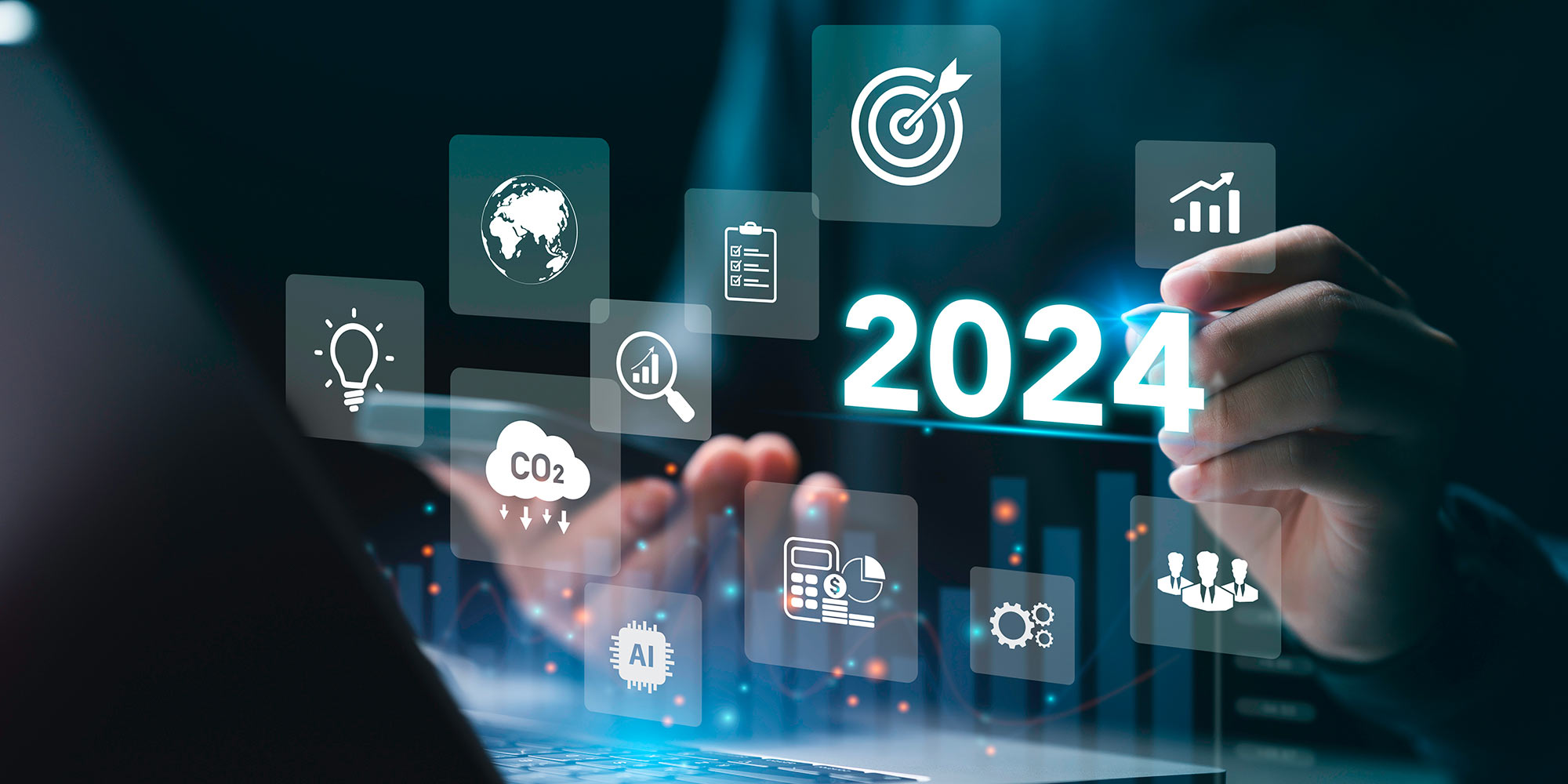Technology and telecoms: five major trends for 2024 - DEEP
Technology and telecoms: five major trends for 2024
16 January 2024

1. Making AI a real partner
There has never been so much talk about artificial intelligence as there is now. The challenge for 2024 will undoubtedly be to go beyond the rhetoric, to go beyond the fears and hopes assumed by these technologies and actually implement them on an organisational scale.
Over the past few months, we have all seen artificial intelligence such as ChatGPT and Midjourney in action. The results are impressive but not without flaws. They raise a lot of questions. The challenge over the coming months will be to turn these technologies into partners that employees can use to ease or streamline processes and generate greater value.
In many areas, artificial intelligence is needed to support organisations. This is particularly true in the field of safety and risk management. Data analysis based on AI engines should enable us to become more efficient and better able to deal with the threats. Generative artificial intelligence, in particular, will transform a number of professions, especially in the field of content development and creation. While these tools are powerful, the associated risks of misuse are also significant. One of the challenges will be to use them responsibly, with appropriate governance.
Integrating them across organisations also means taking risk and compliance issues into account. The European Union was the first to establish a clear framework for the use of these technologies, authorising them while setting limits. It is within this framework that companies are called upon to implement it.
2. The cloud, for easier access to advanced technologies
The move to the cloud will continue. While the adoption of platforms is still motivated by the search for greater flexibility and agility in the use of resources, a desire for access to the most advanced technologies, such as artificial intelligence, is driving the acceleration of the movement.
More than ever, the adoption of the cloud needs to be properly supported. In most cases, for migration to be successful, the system environment and the way technology is used must be reviewed. In this respect, organisations need to ensure that the use of platforms or shared solutions is the most appropriate way of achieving the desired result. Risks also need to be assessed, particularly in terms of data protection and security. Sovereignty issues are likely to remain the focus of discussions in the years to come.
3. 5G, IoT: even more data to incorporate
With the development of 5G – the proliferation of connected objects (IoT) – the volume of data produced will continue to grow significantly. This data will come from an ever-increasing number of diverse sources. While improving the quality of the network should make it easier to share this information transparently and securely, one of the major challenges will be to integrate, cross-reference and analyse this data in order to derive value from it. Before thinking about artificial intelligence, companies can take advantage of the data analysis platforms available in Luxembourg.
4. Stepping up the fight against cyber threats
A natural result of the accelerating digital transformation of organisations and societies is growth in the number of vulnerabilities and exposure to cyber threats. Malicious actors in this field also use the latest tools and technologies to orchestrate their attacks. The proliferation of connected objects, the democratisation of computing resources and the emergence of artificial intelligence mean that their firepower has increased tenfold.
In this digital society, one of the challenges facing teams is managing the vulnerabilities associated with the digital assets on which organisations rely. The number of vulnerabilities continues to grow, making the role of cybersecurity professionals particularly complex. In the coming months, one of the challenges will be to prioritise the management of these vulnerabilities, taking into account their level of criticality for the business. More than ever, players need to develop a better understanding of the risks to which they are exposed, and a real command of their environment, with a view to maintaining active and dynamic monitoring of threats.
5. Adopting a responsible and sustainable approach to technology
Technological uses have an environmental impact. Some digital uses can, for example, minimise the energy resources needed to carry out an activity, optimise the operation of a building or reduce the need to travel. That’s a good thing. The use of IT resources, however, usually requires additional electrical power. Manufacturing such IT resources involves extracting minerals from the ground, with significant repercussions for the environment.
At a time when companies are being called upon to adopt a sustainable development approach, the impact of the use of technology needs to be better taken into account. Organisations need to consider the levers that will enable them to reduce the footprint of their information systems. IT systems managers assume increasing responsibility for these issues. According to Gartner, “by 2027, 25% of CIOs will have their remuneration linked to their sustainable technological impact”.
In this respect, players are called upon to select the technologies that will help to boost sustainability in their sector and that are identified as priorities for their company and their key stakeholders.
Contact us
Do you have any questions about an article? Do you need help solving your IT issues?
Contact an expert







Our experts answer your questions
Do you have any questions about an article? Do you need help solving your IT issues?

